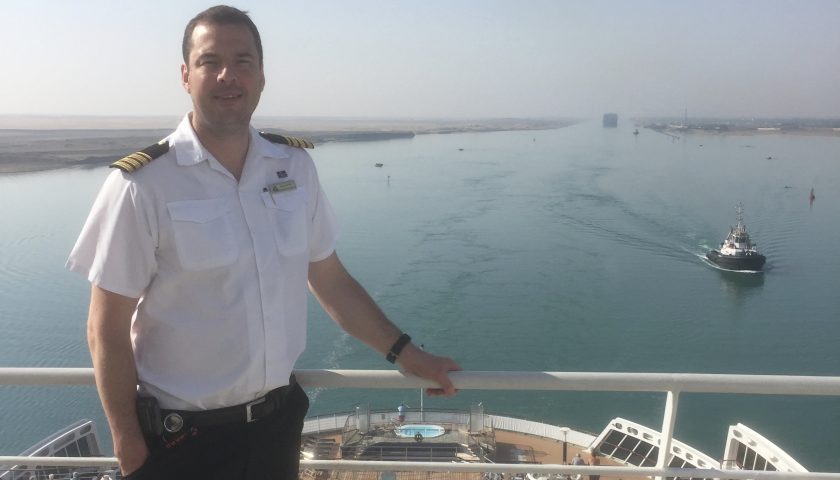I am really pleased to bring you my latest interview with Cunard Ship Services Engineer Alastair Smith. Alastair was one of the first people I met when I began working at sea on Ventura back in 2009. Since then, my husband and I have had the pleasure of sailing with him many times on Ventura and Azura. Alastair is currently sailing as a Ship Services Engineer (a senior officer rank) on board Queen Mary 2 (QM2) but he has also stepped up to cover the Staff Chief Engineer role in the past.
How long have you been working at sea and which ships have you sailed on?
I have been working at sea now for 15 years, of which nearly 11 have been with Carnival UK (I joined July 2007). I initially started as Engineer Cadet with a company called Paccship UK, which managed a fleet of ships on behalf of Pacific Carriers Ltd. I sailed on general cargo ships and bulk carriers. On completion of my cadetship I went to work for Maersk in their UK managed fleet of container ships.
Since coming to Carnival UK, I have worked for the brands Cunard, P&O Cruises and Ocean Village. My vessels have been Queen Mary 2, Ventura, Azura, Adonia and Ocean Village 2.
What made you want to become an engineer in the Merchant Navy?
Since a young age I have been technically minded, and this showed throughout my school life where I performed best in Maths and Science based subjects. Following a faltered start in the world of IT, I found myself working for a company called Cosalt Holiday Homes based in Hull, East Yorkshire. I quickly became frustrated at the tedious nature of the work and the same commute in and out of the city everyday! I also knew I was capable of achieving far more than what was realistically possible in my career at that time and was always on the look out for possibilities that would allow me to change that.
At the time I had quite a few friends who had decided to become cadets in the Merchant Navy and were coming home with stories of different places they had been and the variety of experiences they had encountered. Also, my Father had several friends who had worked at sea for much of their lives and I turned to asking them about how they had found it – incredibly 2 of them had even worked for P&O Cruises. One as an engineer, whose career culminated in being a Chief Engineer following a move to “Panocean”, a part of the P&O Bulk Shipping Division. The other was a Radio Officer, which was the pre-cursor role to the Electro-Technical Officers we have today.
All those I spoke to had led successful careers and enjoyed the work they did. With all of this in mind, I decided to go for the change and take the challenge on.
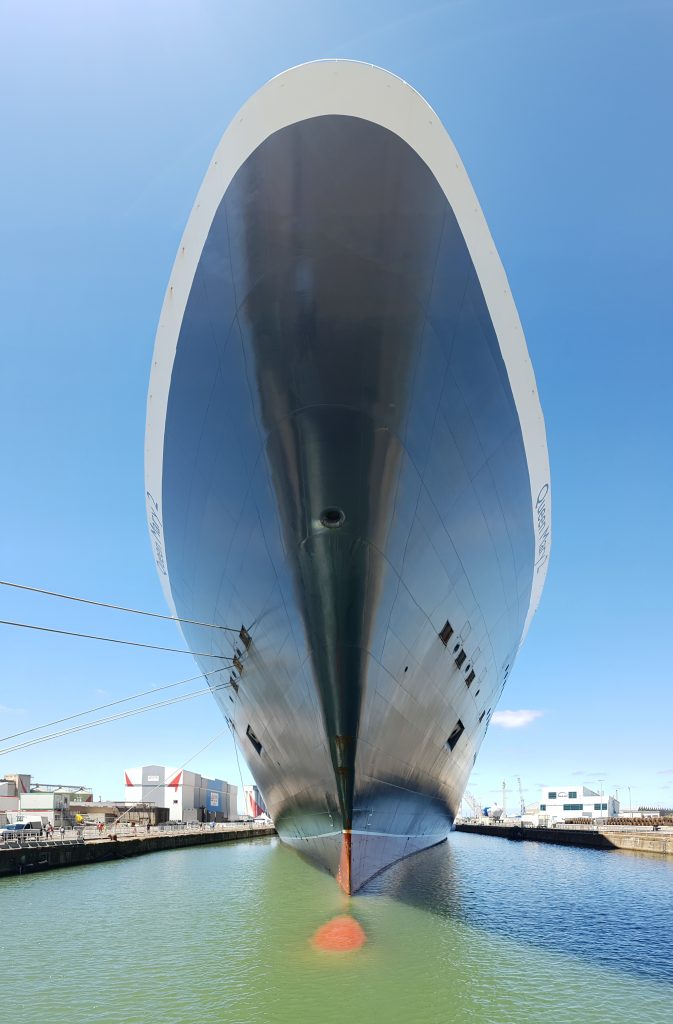
Can you tell me a bit about your rank and what a typical sea day entails for you?
My role of Ships Services Engineer is comprised of two sides: Safety & Facilities. I am primarily responsible for the management of maintenance on critical safety systems onboard, including fixed fire fighting systems and life saving apparatus. The other responsibility is management of the deck and hotel facilities maintenance, which includes HVAC ventilation, plumbing, carpentry and hotel services.
A typical sea day entails a morning debrief with those staff who are on a night shift together with a review of daily morning reports received from the Engine Control Room and Hotel. With the de-briefs complete, the various supervisors and managers of the teams will then get together with me and discuss the days planned (and unplanned!) work. This includes the Ventilation Officer, Hotel Services Engineer, Chief Plumber and Chief Carpenter.
With the day now underway, I attend the morning technical meeting with the Chief Engineer which allows the key players to discuss major points of the day’s work and how it may affect each other. Also other items may be brought up through the discussion which will alter the plan for the day.
The rest of the day will be spent following up on works being carried out, reviewing outstanding work and planning for upcoming events. We often plan major work months or even over a year in advance.
Inevitably on a liner such as Queen Mary 2 there are hosted parties for passengers to attend on many evenings, and regular attendance by senior officers is always well received.
What are the biggest challenges you face on board as a Ship Services Engineer?
I am in a position now where promotion to Staff Chief Engineer is hopefully not far away and I have stepped into the position several times. As Ships Services Engineer, the biggest challenge is the incredible volume of work that is carried out by the team under me.
Whilst this may appear impressive in terms of what the team achieves, it is almost impossible to keep a clear view of everything that is going on. Trying to ensure our very high standards are maintained on a daily basis occupies a lot of my time!
The Staff Chief Engineer is responsible for all of the people with the Engineering team of the Technical Department. There is not a day that goes past when a crew member is not having a difficulty of some kind. Combining this with the responsibility of managing the upkeep and maintenance of the machinery spaces onboard as a whole represents the biggest challenge I have found in that position.
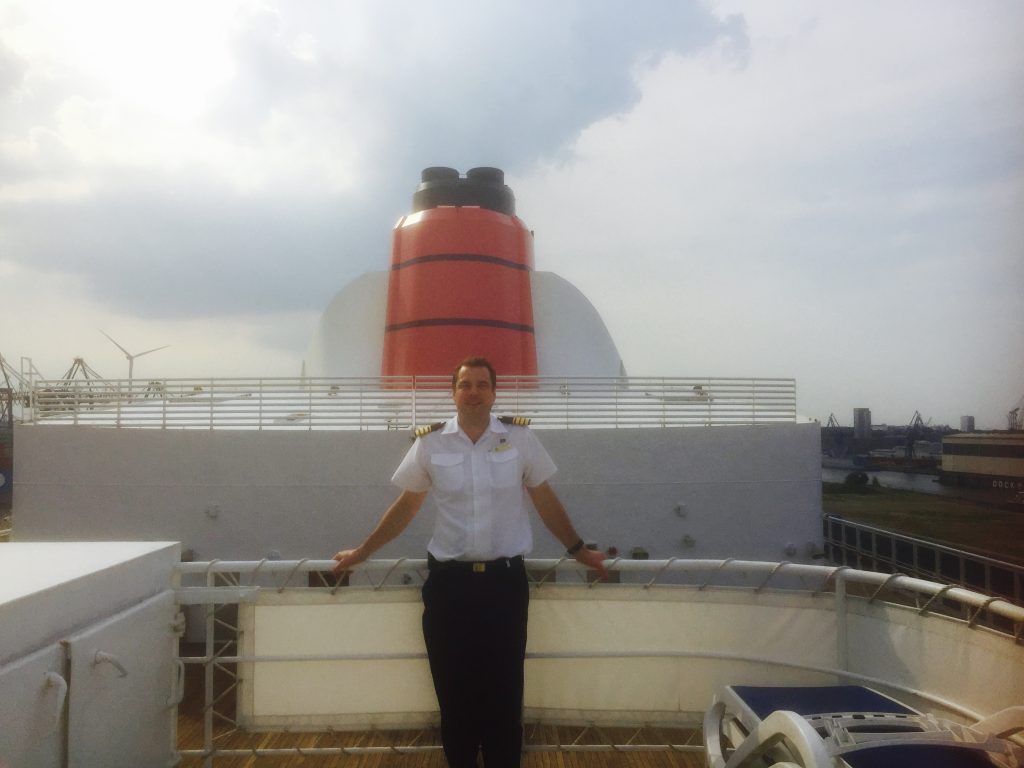
Have you ever had to deal with an engine that’s stopped working? What happens in this situation?
Unfortunately during my tenure as 1stEngineer Officer I frequently had to deal with engines that had stopped working! Fortunately all of our ships are installed with several engines (typically between 4 & 6), so we are not carrying all of our eggs in one basket. When an engine has tripped off or fails to start, the first step is to interrogate all of the alarms present on the control panel for the engine, as this often gives a good indication as to where the problem may lie.
Based on the events that occurred as the engine failed, plus all other information that can be gained, a structured approach is taken to identify the particular fault. This structure differs from ship to ship due to different engine manufacturers, models and specific installations, but mostly the fault finding process is very similar. Once the fault has been found, corrective action can be taken to restore the engine to full working order – a process that be between minutes and months depending upon the severity of the failure.
The most important thing to keep in mind is to ensure the area around the engine is safe, and to maintain electrical supplies and propulsion so as to not affect the ships safety or itinerary.
Can you tell me a bit about the structure of your department? How many people do you manage and what type of shifts do your team do?
Within the Ships Services department, I am responsible for the HVAC, Plumbing, Carpentry and Hotel Services teams comprising a total of around 30 people.
HVAC is directly managed by the Ventilation Officer. They work normal day shifts however have one person covering a duty pager 24 hours a day in case of essential call outs.
Plumbing is headed up by the Chief Plumber. 1 person is on a night shift covering essential calls throughout the night with the remainder of the team on day work.
Carpentry is lead by the Chief Carpenter. 2 people are on a night shift within this team and complete jobs that are too intrusive during the day e.g. closing off alleyways etc. The remainder of the team are on day work.
Finally the Hotel Services team is run by the Hotel Services Engineer. Similar in structure to HVAC, all the team are on day work with one person covering a duty pager 24 hours.
The final slot is taken by our Pool Motorman who is a direct report to me. However if any maintenance work needs to be carried out on the pools or whirlpools we will involve the Hotel Services team.
Queen Mary 2 is often referred to as the last ‘in service’ ocean going liner of its kind. Can you explain why a liner is different to a cruise ship?
The Queen Mary 2 is designed and built for the North Atlantic service between Southampton and New York at all times of the year. In order to achieve this, there are several key changes required:
- Thicker hull plating, especially at the forward end where there is more stress.
- Deeper draught (around 50% more than a normal cruise ship).
- 4 stabilisers rather than 2 (forward and aft).
- Maximum width of the ship is achieved much farther aft than a cruise ship, giving it the very streamlined hull.
- Accommodation starts much further aft giving it a very long foredeck. This is due to the possibility of waves coming over the bow and damaging accommodation that would otherwise be too far forward.
- A very high boat / promenade deck. The ship actually has a dispensation for the height at which the lifeboats are kept and boarded, as they are above the maximum height normally allowed for passenger ships.
- Finally a LOT of power, to propel this huge vessel to a maximum speed of 30 knots.
Other changes are more in keeping with the timeless tradition of opulence and elegance. For a large passenger ship she only carries just over 2500 guests, which allows for very large public spaces and a real feeling of grandeur when onboard.
What do you like most about working on board Queen Mary 2?
Being not just the flag ship of Cunard but being seen as the flag ship of Carnival Corporation as a whole, brings a certain level of expectation to the ship and all those who work onboard. We are privileged to be a star attraction in some high profile events that push the name and the ship to a worldwide audience – a classic example is hosting the premier of “The Greatest Showman” in New York last year.
The ship often carries some of the most famous people in the world on the legendary trans-atlantic crossings from world leaders and politicians to rock stars. It really is the most famous ship currently operating in the world and to be involved in such great events is an experience that cannot be found on any other, and for me is the best part of working onboard.
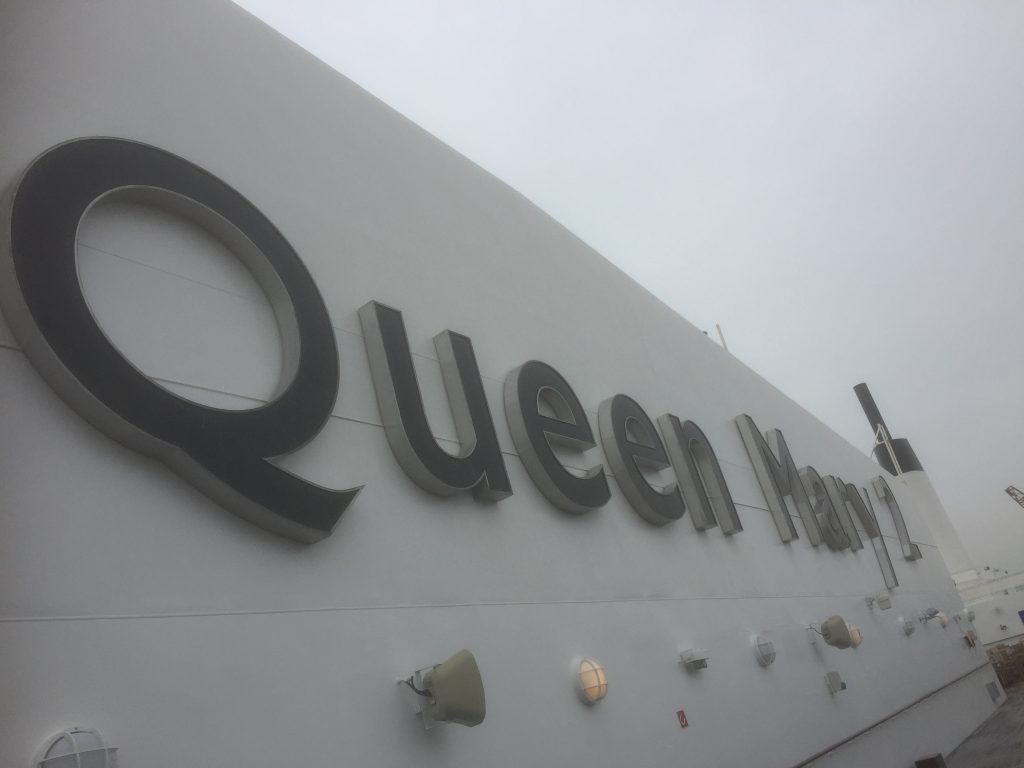
How does the engine room differ on Queen Mary 2 compared to other ships? Do you need a bigger team than normal?
The engine room where the diesel generators are installed is very much the same as any other passenger ship. The largest difference is the 2 gas turbines that are installed on deck 12, and give the ship the huge amount of extra power required to run its large propulsion plant at high loads.
The propulsion system is very unique. The ship has propulsion pods installed, which in themselves are very commonplace but here there are 4 of them (most podded ships only have 2) and at 25MW each they were the largest ever made when the ship was launched. This does create extra workload for the Electro-Technical Officers onboard and as a result we do carry an extra 1stETO specifically on engine room duty.
What other duties do you have to carry out on board?
The Cunard experience still revolves a lot around the tradition of elegantly passing from one side of the Atlantic to the other. We have far more formal nights than any other brand, and various passenger functions are hosted – welcome onboard parties, parties for members of the loyalty programme, senior officer parties etc. The guests do enjoy meeting those of us that work onboard at these events, so attendance is encouraged as regularly as possible.
The Technical Department also has a dedicated table in the main Britannia restaurant on all formal nights. This is hosted by one of the Senior Officers and we take turns, so as not to cause too much expansion of any one individual’s waist line!
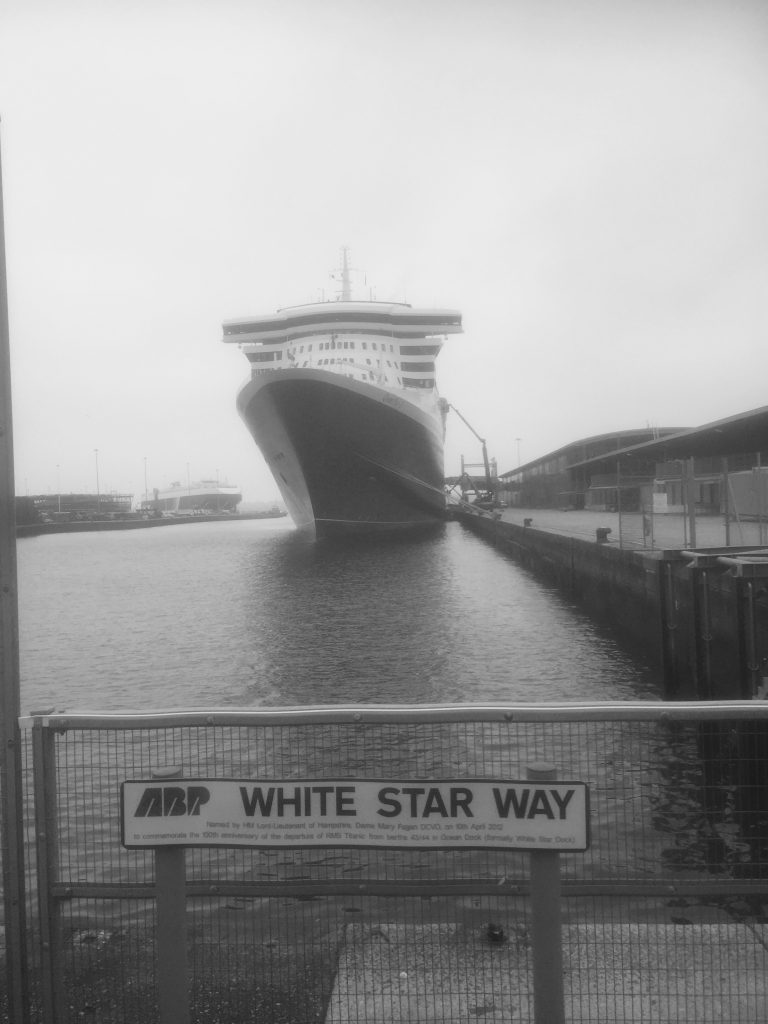
Do you get much time to go ashore? What is your favourite port?
Compared to other ships, the Queen Mary 2’s itinerary comprises far more days at sea, so time available to get ashore is limited. When in port, there is also a lot of activity in terms of visitors, contractors joining / leaving, work being carried out that cannot be completed at sea etc. If I do want to get off though, I do try to pre-plan my day in advance to allow myself some down time and get off for some much needed R&R.
Of all the ports I have travelled to in my career to date, I think Cape Town stands out as a particular port I have enjoyed.
Have you come across any celebrities or heroes of yours, whilst sailing on one of the most famous ships in the world?
Travelling with celebrities is at risk of becoming common on Queen Mary 2! As I write this we have Sir Michael Parkinson visiting various areas around the ship. Last year I happened to walk through the terminal as Travis Barker of Blink 182 fame was about to embark, complete with an entire coach carrying his entourage.
I haven’t met any what I would call personal heroes as yet, but give it time on here and you never know who you might meet around the next corner.
Do you have any words of advice for anyone considering a career in engineering?
The career path at sea is both a fruitful one and rewarding one. Life as a Officer Cadet is a fantastic opportunity to get a high level of training and education with a minimal personal financial outlay – something which puts many young people off studying these days. Cadets are sponsored for their studies, have accommodation generally provided and even get some pay for their efforts on top.
Those completing their cadetship successfully can graduate with either an HND or Foundation Degree in Marine Engineering, and their Engineer Officer of the Watch Certificate. From here there is a clear and structured path at sea for those who wish to become a Chief Engineer, but many also find successful routes to senior shoreside positions or continue their studies to specialise in particular fields.
Find out more about Cunard via their official website. You can read more officer interviews by following this link.
I am delighted to inform you that this blog has been featured in Feedspot’s Top 10 UK Cruise Blogs list. You can read the full list here.
Follow me on social media

